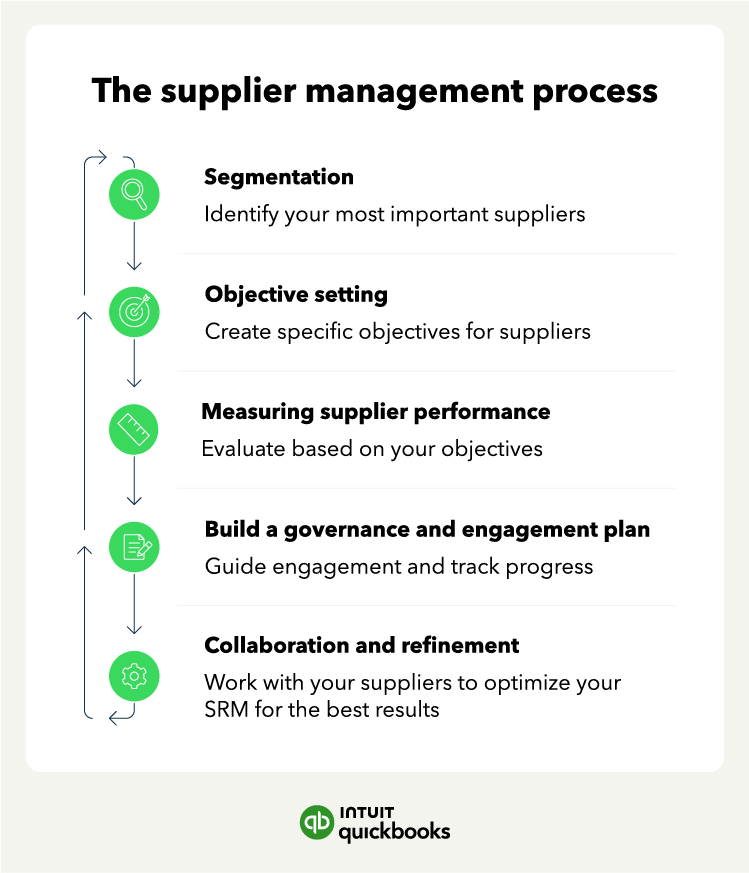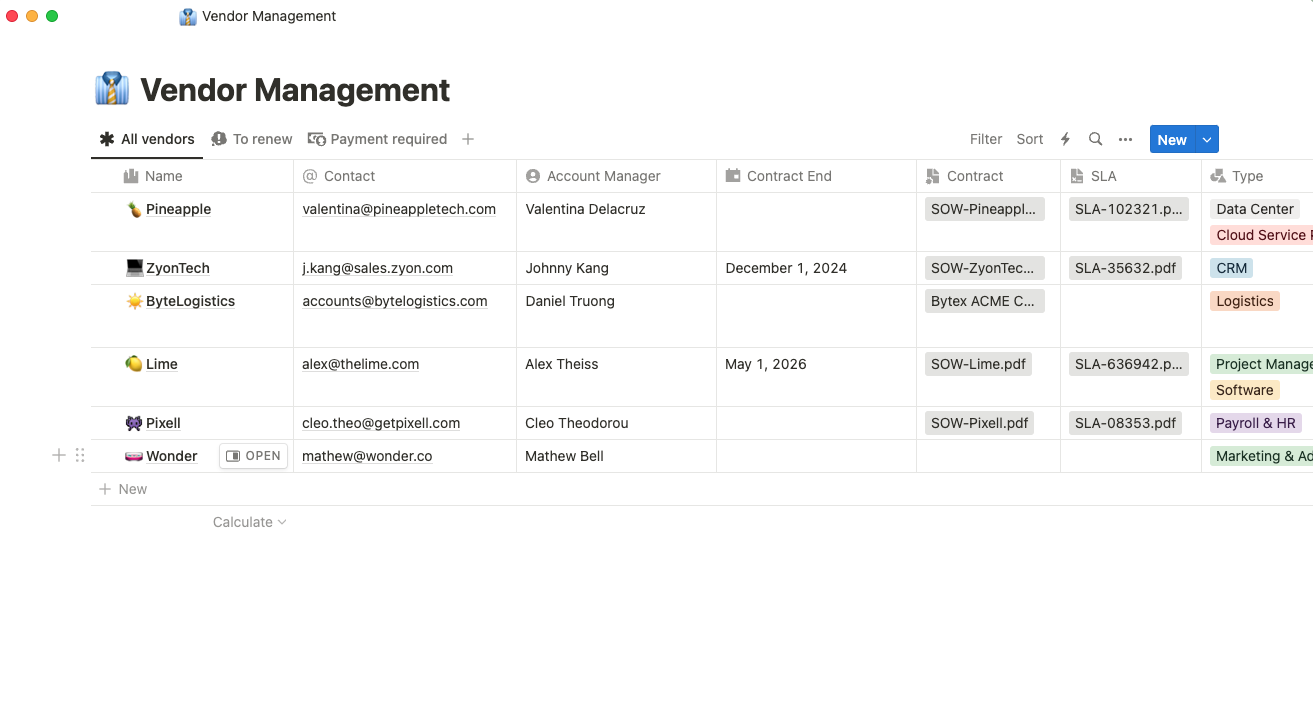A vendor in QuickBooks is a person or company that you owe money to or subcontractors that work for you. They are typically the most commonly used name type in QuickBooks and are used when you pay or receive a refund for services from a company or person.
An example would be if you buy beer from the Duff Beer Company, Duff Beer would be a vendor in your QuickBooks file. Vendors are different from customers, as vendors are who you purchase from, while customers are who you sell to.
Contractors in QuickBooks are similar to vendors but are paid with invoices rather than receiving payments through paying bills. You can personalize your reports in QuickBooks to distinguish subcontractors from other vendors.

Credit: quickbooks.intuit.com
Introduction To Vendors In Quickbooks
In QuickBooks, vendors play a crucial role in managing your business finances. They are the individuals or companies from whom you purchase products or services. Understanding the concept of vendors and their significance is essential for accurate financial record-keeping and streamlined business operations.
Definition And Importance Of A Vendor
A vendor in QuickBooks refers to a person or business entity from whom you purchase goods or services. They are the suppliers or vendors who play a vital role in your business operations. Vendors can range from the local office supply store where you buy stationery to large-scale suppliers who provide raw materials for production.
A vendor is of significant importance in QuickBooks as they are responsible for providing the products or services that your business needs to function. Maintaining accurate and up-to-date vendor records ensures timely payments, efficient inventory management, and transparent financial reporting. By categorizing your expenses under specific vendors, QuickBooks enables you to analyze your spending patterns and make informed purchasing decisions.
Difference Between A Vendor And A Customer
The difference between a vendor and a customer in QuickBooks lies in the nature of the transaction. A vendor is an entity from whom you purchase goods or services, while a customer is someone who buys from your business.
Customers are individuals or businesses who pay you for the products or services you offer. They contribute to your revenue stream and are often referred to as clients or buyers. On the other hand, vendors are the suppliers or service providers to whom you owe payment.
Difference Between A Vendor And A Contractor
The distinction between a vendor and a contractor in QuickBooks lies in the nature of the services rendered. While both play a role in your business operations, their functions are different.
A vendor supplies products or services that are essential for your business but are not directly involved in your day-to-day operations. For example, a vendor could be the office supply store from where you purchase office equipment or a software provider.
On the other hand, a contractor is an individual or business entity that is hired to provide specific services related to your core business activities. They are usually engaged for a limited period or on a project-by-project basis. Examples of contractors include freelance graphic designers, web developers, or marketing consultants.
Understanding the differences between vendors, customers, and contractors is crucial for accurate financial management and reporting in QuickBooks. By maintaining clear records and correctly categorizing your transactions, you can ensure a smooth workflow and make informed business decisions.
Vendor Management In Quickbooks
Vendor management is a crucial aspect of running a business efficiently, and QuickBooks provides robust features to streamline vendor management processes. Whether you are using QuickBooks Desktop or QuickBooks Online, you can easily add vendors and manage their information with just a few clicks.
Adding Vendors In Quickbooks Desktop
Adding vendors in QuickBooks Desktop is a simple process that allows you to keep track of your business's relationships with various suppliers and service providers. To add a vendor in QuickBooks Desktop, follow these steps:
- Open QuickBooks Desktop and navigate to the "Vendors" menu.
- Click on "Vendor Center" to open the Vendor Center window.
- Click on the "New Vendor" button to add a new vendor.
- Enter the vendor's name, contact information, and other relevant details.
- Click "OK" to save the vendor's information.
Adding Vendors In Quickbooks Online
QuickBooks Online offers a seamless process for adding vendors to your business records. Here's how you can add vendors in QuickBooks Online:
- Login to your QuickBooks Online account.
- Click on the "Expenses" tab in the left-hand menu.
- Select "Vendors" from the top menu.
- Click on the "New Vendor" button to add a new vendor.
- Fill in the vendor's information, such as name, address, and contact details.
- Click "Save" to save the vendor's information.
Vendor Information Management
Managing vendor information is crucial for accurate accounting and smooth transactions. QuickBooks allows you to store and organize vendor information in one centralized location. With QuickBooks, you can:
- Keep track of vendor contact information, such as phone numbers and addresses.
- Monitor vendor payment terms and due dates for bills.
- Record and categorize expenses related to specific vendors.
- Generate reports to analyze vendor performance and make informed business decisions.
By efficiently managing your vendor information in QuickBooks, you can streamline your purchasing processes and maintain strong relationships with your suppliers and service providers.
Vendor Transactions In Quickbooks
In QuickBooks, a vendor refers to any company or individual you purchase goods or services from. Managing vendor transactions efficiently is essential for accurate financial records and maintaining a healthy business relationship. This section will guide you through the various aspects of vendor transactions in QuickBooks.
Recording Bills And Expenses From Vendors
One of the key tasks in managing vendor transactions in QuickBooks is recording bills and expenses. When you receive a bill or incur an expense from a vendor, QuickBooks allows you to easily record and track these transactions.
To record a bill or expense from a vendor, follow these steps:
- Go to the "Vendor" menu and select "Enter Bills" or "Enter Expenses".
- Choose the appropriate vendor from the drop-down list.
- Enter the necessary details, such as the amount, date, and description of the bill or expense.
- Save the transaction.
By recording bills and expenses accurately, you can keep track of your outstanding payments to vendors and ensure timely payments.
Managing Payments To Vendors
Efficiently managing payments to vendors is crucial for maintaining strong relationships and avoiding late payment penalties. QuickBooks provides several features to streamline the payment process.
To manage payments to vendors in QuickBooks, you can:
- Create and print checks directly from QuickBooks.
- Link vendor bills with payments to ensure accurate accounting.
- Set up automatic payment reminders to avoid missing payment deadlines.
- Generate reports to monitor outstanding vendor payments and analyze cash flow.
By staying on top of your vendor payments, you can maintain good relationships and avoid any financial disruptions.
Vendor Reporting And Analysis
Vendor reporting and analysis in QuickBooks provide valuable insights into your vendor relationships and financial performance. By examining vendor-related reports, you can make informed decisions and optimize your business processes.
QuickBooks offers various vendor reporting capabilities, including:
- Vendor Balance Summary: Provides an overview of outstanding balances owed to each vendor.
- Vendor Transaction Detail: Shows a detailed breakdown of all transactions with vendors, including bills, expenses, and payments.
- Vendor Contact List: Displays contact information for all your vendors.
- Vendor Purchase Summary: Summarizes purchase volumes and trends for each vendor.
By leveraging these reports, you can identify opportunities for cost savings, negotiate better terms with vendors, and improve overall vendor management.

Credit: www.notion.so
Best Practices For Vendor Management In Quickbooks
Managing vendors efficiently in QuickBooks is a crucial aspect of maintaining smooth business operations. Implementing best practices for vendor management not only streamlines processes but also ensures accurate financial records. This article will delve into the best practices for vendor management in QuickBooks, covering key aspects such as organizing and categorizing vendors, setting payment terms and due dates, and maintaining vendor relationships.
Organizing And Categorizing Vendors
It's essential to organize and categorize vendors within QuickBooks to easily access and manage their information. Utilize the vendor center to maintain a comprehensive list of vendors, enabling quick access to contact details, transaction history, and outstanding balances. Categorizing vendors based on the nature of the services or products they provide can further streamline the management process.
Setting Payment Terms And Due Dates
Incorporating clear payment terms and due dates for each vendor ensures timely and accurate payments, thereby fostering positive vendor relationships. Through QuickBooks, you can easily set specific payment terms, such as net 30 or net 60, and establish due dates for invoices. This proactive approach aids in avoiding late payments and potential penalties while enhancing vendor satisfaction.
Maintaining Vendor Relationships
Consistent communication and reliable relationships with vendors are vital for seamless business operations. QuickBooks facilitates maintaining vendor relationships by providing insights into prior interactions, outstanding payments, and contract terms. Utilize the vendor center to add notes or reminders regarding important vendor communications, agreements, or upcoming payments, ensuring a collaborative and transparent relationship.

Credit: www.liveflow.io
Frequently Asked Questions On What Is A Vendor In Quickbooks
What Is An Example Of A Vendor In Quickbooks?
An example of a vendor in QuickBooks is a company or person from whom you buy goods or services.
What Is The Difference Between A Customer And A Vendor In Quickbooks?
In QuickBooks, a vendor is someone or a company that you purchase goods or services from, while a customer is someone or a company that buys goods or services from you.
What's The Difference Between Customer And Vendor?
A vendor is the person or company that provides a product or service to the customer. A customer, on the other hand, is the one who buys the product or service from the vendor.
What Is The Difference Between A Vendor And A Contractor In Quickbooks?
In QuickBooks, the main difference between a vendor and a contractor is how they are paid. Vendors are paid with invoices, while contractors receive payments through paying bills. QuickBooks also allows you to customize reports to separate subcontractors from other vendors.
What Is A Vendor In Quickbooks?
A vendor in QuickBooks is a person or business that provides goods or services to your company. They are typically the entities from which you purchase products or services for your business operations.
How Do I Add A New Vendor In Quickbooks?
To add a new vendor in QuickBooks, go to the "Expenses" or "Vendors" tab, then select "New Vendor," and enter the vendor's details. This will create a new vendor profile in your QuickBooks.
Conclusion
Vendors play a crucial role in Quickbooks, allowing businesses to track and manage their expenses and payments effectively. From purchasing products and services to managing subcontractors, vendors are an essential part of any business operation. By adding and tracking vendors in Quickbooks, businesses can ensure accurate financial reporting and maintain clear records.
Managing vendors efficiently can lead to better financial control and streamlined operations, ultimately contributing to the success of the business. So, understanding the importance of vendors in Quickbooks is essential for businesses looking to optimize their financial management processes.